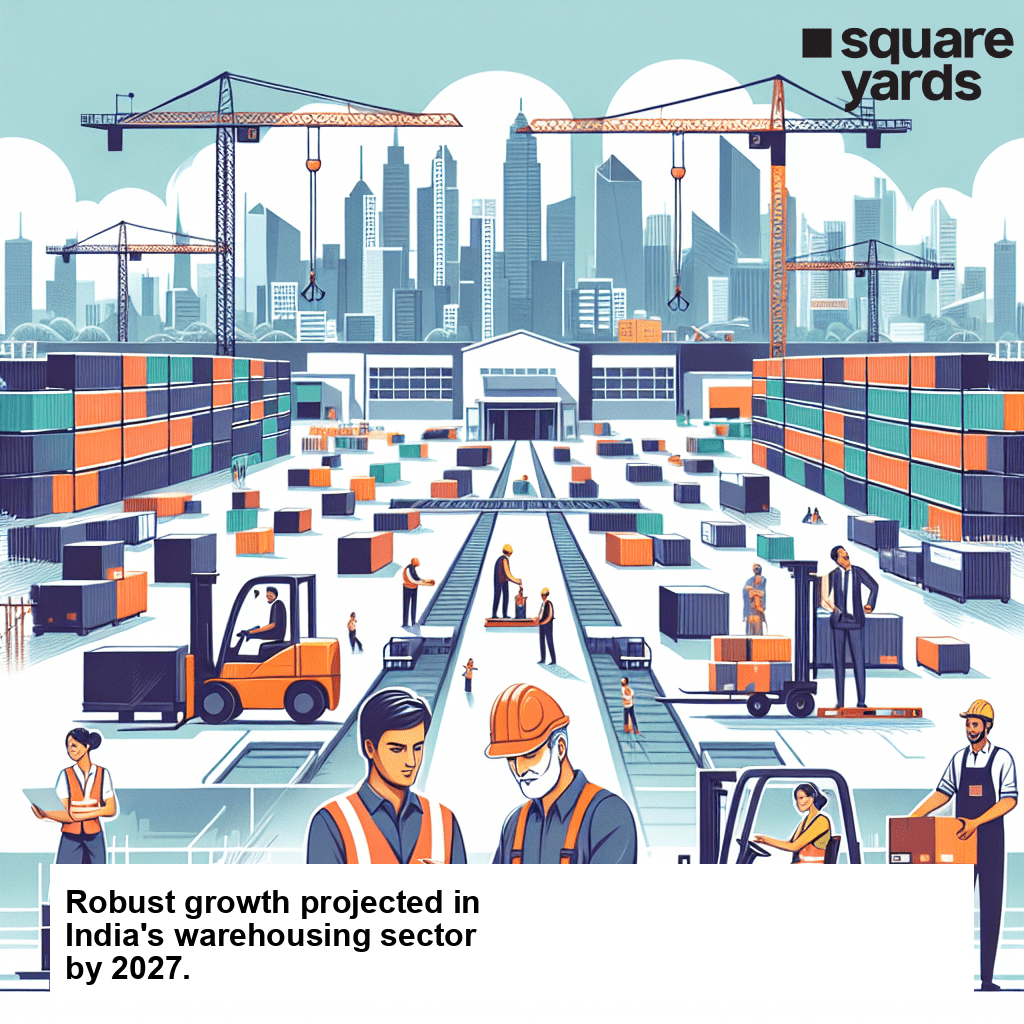India’s warehousing sector has experienced remarkable growth, as indicated by the latest report released by JLL titled ‘Exploring India’s Thriving Logistics and Warehousing Landscape’ at LogiMAT India 2024 in Delhi NCR. The report highlights a significant increase in the total warehousing stock, including Grade A and B, across eight major cities, reaching 371 million sq. ft by the end of 2023. This demonstrates a growth of 15% year-on-year in the top eight cities compared to the previous year’s data of 329 million sq. ft.
Contribution of Major Cities and Quality Warehouse Spaces
The report reveals that more than half of the warehousing stock is contributed by India’s three largest cities, namely Delhi NCR, Mumbai, and Bengaluru. Additionally, there has been a notable shift in occupiers’ preference towards Grade A spaces, which accounted for approximately 70% of the observed demand. This shift can be attributed to the heightened importance of hygiene and safety measures during the COVID-19 pandemic. Leading in terms of net absorption, Pune witnessed the highest demand with 8 million sq. ft. This surge in absorption can be credited to the growing manufacturing demand in the country, fueled by government initiatives like Make in India and Production Linked Incentives Schemes. Mumbai and Delhi NCR, recognized as the largest warehousing markets, closely followed Pune with a net absorption of approximately 7 million sq. ft each.
Decreasing Vacancy Rates and Rental Growth
As the market demand continues to escalate, there has been a marginal decrease in the overall vacancy rate, reaching 15% by 2023. Furthermore, it is projected that this vacancy rate will decrease even further to just 8% by 2027, indicating high demand and utilization of warehousing spaces. Additionally, Grade A vacancy rates decreased significantly from 7% in 2022 to 5% in 2023, and it is expected to remain below 5% by 2027. This shrinkage can be attributed to the surge in demand for quality and compliant spaces. Rent prices, which experienced slow growth over the past five years, underwent an upward correction in 2022 and 2023. This upward growth is due to increasing land prices and construction costs and marks a 6% year-on-year increase from 2021 to 2023.
Diverse Sectors’ Contribution to Warehousing Demand
The report highlights that third-party logistics (3PL) companies have consistently remained as the largest segment based on warehousing space demand over the years. In 2023, additional contributors to the demand for warehousing spaces include various manufacturing sectors like Engineering and Automotive, as well as ancillary sectors. This revival of manufacturing demand can be credited to the post-COVID reopening of the sectors and government initiatives such as Make in India. Demand from the Retail and Fast-Moving Consumer Goods (FMCG) sectors has consistently played a significant role in 2023 due to the increasing disposable incomes and consumption-led demand. Furthermore, e-commerce has also displayed notable growth in demand for warehouse spaces due to the increasing adoption of online purchases. However, the report indicates a cooling down of demand from the e-commerce sector since 2022, following the surging demand experienced during the COVID-19 lockdowns.
Promising Future Growth Opportunities
With the Indian economy recovering from the impact of the pandemic, the logistics and warehousing industry is well-positioned for robust growth. Evolving consumer demand, the expanding presence of 3PL companies, and increased traction in the manufacturing sectors will serve as driving factors for continued growth. Over the next three years, the warehouse stock is projected to reach 595 million sq. ft with a CAGR of 12% by 2027. The superior-quality Grade A spaces, fueled by occupiers’ preference, are expected to witness a CAGR of 16%, reaching 345 million sq. ft by 2027. The reduced Grade A vacancy rates and increasing rental prices are indicative of this positive trend.






















